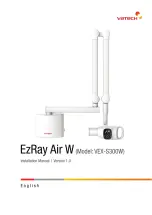
Wayfinder DVL Guide
P/N 95P-6001-00 (October 2020)
EAR-Controlled Technology Subject to Restrictions Contained on the Cover Page.
Page 15
Troubleshooting
The purpose of this section is to provide a list of critical tests to perform when the system is not operating
to either specifications or expectations.
Communications Issues
The Wayfinder is connected to the data collection computer via a standard RS-232 serial port. If you have
problems communicating with the Wayfinder, check to make sure that you are selecting the correct serial
port or correct serial device. USB-serial adapters may be used if the computer does not have a serial port.
Be aware that some USB-serial adapters are not fully compatible with Wayfinder data collection. If you
experience communications issues with the USB-serial adapter, first try a different device. TRDI has had
good experience with the Edgeport
®
line of multi-port USB-serial adapters and single-port adapters using
the FTDI chipset and drivers.
Identifying EMI
The main sources of EMI are induced voltages from signal and power lines that are in proximity to the ef-
fected component or signal. These problems are avoided or minimized by the proper routing of wires,
proper shielding of wires and proper location of individual systems components. EMI is also caused by
unwanted differences in potential on signal or ground electronic lines.
It is critical to route the Wayfinder cable such that it is not in proximity to interfering signal sources, such
as clocks, CPU’s, DC-DC converters, engine controls, and hydroelectric power units, power lines, acoustic
devices and their power electronic. In the case of radiated EMI to the cable, then the EMI can be rapidly
reduced as the power reduction goes by square of the separation distance between the source and the
Wayfinder cable.
To avoid problems when the Wayfinder is installed in the final system, it is helpful to perform a bench test
prior to installation. In the bench test, the Wayfinder should be exercised along with all the other compo-
nents that will be installed in the final system. By performing this initial bench test, EMI and acoustic in-
terference issues can be identified and remedied while all the system components are easily accessible.
The recommended types of systems that should be bench tested:
•
If possible, select components and systems that are acoustically, and RF wise “out of band”,
based on the specifications from the manufacturer of that equipment.
•
It is important to test for all EMI interference that may be occurring in the system. Bench test all
the equipment in air and see if there are interfering sources.
•
Spread out the various systems and components that you intend to use on the bench in a pattern
similar to how they will work.
•
Try varying bench test temperatures, so it can be determined if there are tank circuits in your
system that “tunes into” Wayfinder’s band, or visa-versa.
Observation of the FFT acoustic interference plots will provide information about interference to the Way-
finder DVL. The
Wayfinder Tools
app provides the user with a frequency domain plot (~100% band-
width) of the Wayfinder’s four receiver channels during a sampling interval.
To view the FFT data
:
1. Start
Wayfinder Tools
and connect to the Wayfinder DVL.
2. Click on the
FFT
tab.
3. While observing the FFT use the Wayfinder as a “probe” and touch it against components or sys-
tems to check their acoustic signature. Identify any unacceptable interference. Observe changes in
the plots. Interference will show as large spikes.
















































